“The immunotherapy field has been extremely exciting over the last few years, but still we have many patients to help,” began Patrick Hwu, MD, of the University of Texas MD Anderson Cancer Center, as he opened the third annual Rational Combinations 360°, which was hosted by the Conference Forum on September 13-14, 2018, in Philadelphia.
Checkpoint inhibitor immunotherapies, most notably those targeting the PD-1/PD-L1 pathway, have helped many patients with advanced cancer by “unleashing” their immune systems against their tumors. “PD-1 has been at the forefront for a long time now,” said GlaxoSmithKline’s Axel Hoos, MD, PhD, who co-chaired the conference along with Hwu and Janssen’s Ian McCaffrey, PhD
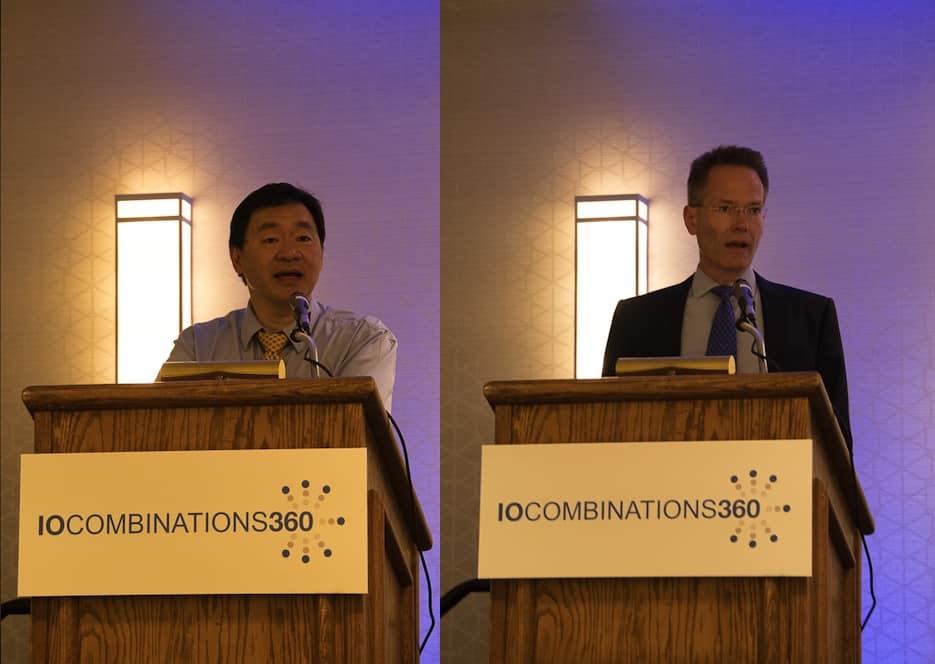
“In many ways, we’re lucky that [the PD-1/PD-L1 pathway] serves, essentially, as the missing link that all of us working in this field were looking for,” added Daniel Chen, MD, PhD, of IGM BioSciences. The first trial testing a PD-1 immunotherapy was launched in 2006, and as of September 2018, there were over 2,250 active trials targeting the PD-1/PD-L1 pathway, according to a recent study by the Cancer Research Institute (CRI) Clinical Accelerator team that was published in Nature Reviews Drug Discovery.
Yet most people still don’t respond to PD-1/PD-L1 treatments by themselves, which has led to an explosion of clinical trials testing these immunotherapies in combination with other treatments, including other immune-based therapies, in order to improve patient survival. Merck’s Roy Baynes, MD, PhD, during his talk on day two, explicitly mentioned combinations involving PD-1 inhibition as a key pillar of their clinical strategy.
Chemotherapy and radiation therapy, for instance, can work well with PD-1 immunotherapy. That’s because those treatments can damage tumor cells and cause them to release their inner contents—including markers known as antigens—that provide the immune system with valuable information about the identity of tumors and how to target them.
“We have thousands of combinations,” noted Hwu,”but we need to figure out how to precisely get to the combinations that are going to make the impact for our patients,” said Hwu. The same CRI paper found that there are now 1,716 combination trials involving PD-1/PD-L1 immunotherapies. Overall, between September 2017 and September 2018, they identified a 67% increase in the number of active agents in the global immunotherapy pipeline, many of which may well synergize with checkpoint immunotherapy.
While the sheer number of combinations being tested offers the hope of bringing us closer to cures for more patients, it also presents its own challenges. To that end, Rational Combinations 360° sought to highlight the latest advanced in immunotherapy approaches as well as strategize about how to streamline the way the field explores combination approaches in general.
Complicating this task, according to the event’s first presenter, Janssen’s Michael Kalos, PhD, is the fact that “in the era of [immunotherapy], rational combinations are a little more complex because they are tackling a more complex milieu, which is the immune system.”
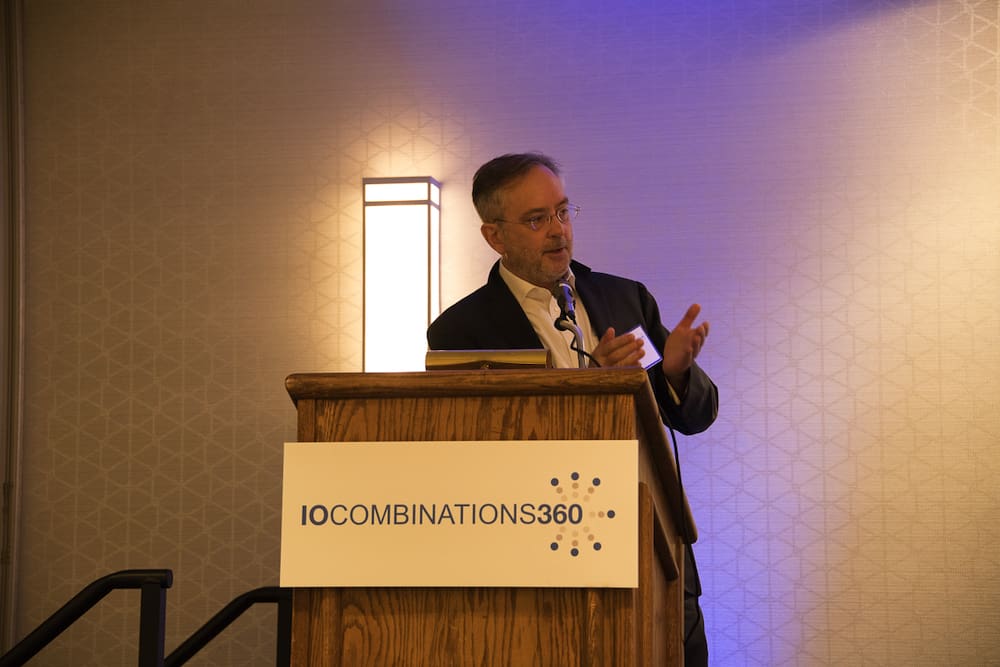
Kalos’ talk focused on combinations involving chimeric antigen receptor (CAR) T cell immunotherapies, an approach that enhances patients’ own immune cells to better target and eliminate tumors. While they’ve already been approved for subtypes of leukemia and lymphoma, “solid tumors are a different story so far,” he acknowledged.
In order to improve CAR T and other cellular therapies for patients with solid cancers, Kalos emphasized the importance of focusing on their ability “to traffic to tumors, to infiltrate tumors, and to really exert their effects in the tumor microenvironment.” One promising approach, he suggested, might be to target and bolster the metabolism of CAR T cells.
A number of these strategies are already being tested in clinical trials. As of last year, there were 375 cellular immunotherapies in clinical trials, including 20 clinical trials testing CAR T cells in combination with PD-1 immunotherapy.
Those clinical trials provide valuable samples that can, according to Kalos, enable doctors and scientists “to assess what is actually happening. And if you understand what is actually happening not only in responding patients, but also in patients that fail therapies, that information is fundamental to help us to go back to the laboratory and identify the molecules that we will test in the next generation of rational combinations,” according to Kalos.
Kalos also drove home the importance of “understanding the targets that we’re going after [because] understanding the biology of the target cells is fundamental.” While CD19, a marker found universally on B cells, has proven an effective target for B cell leukemia and lymphomas, better targets will need to be developed for solid tumors.
Steven Rosenberg, MD, PhD, of the National Cancer Institute, highlighted a new strategy—so new in fact, that the first patient to receive it was treated the day before Rosenberg’s talk—that can target the specific mutations found in an individual’s cancer.
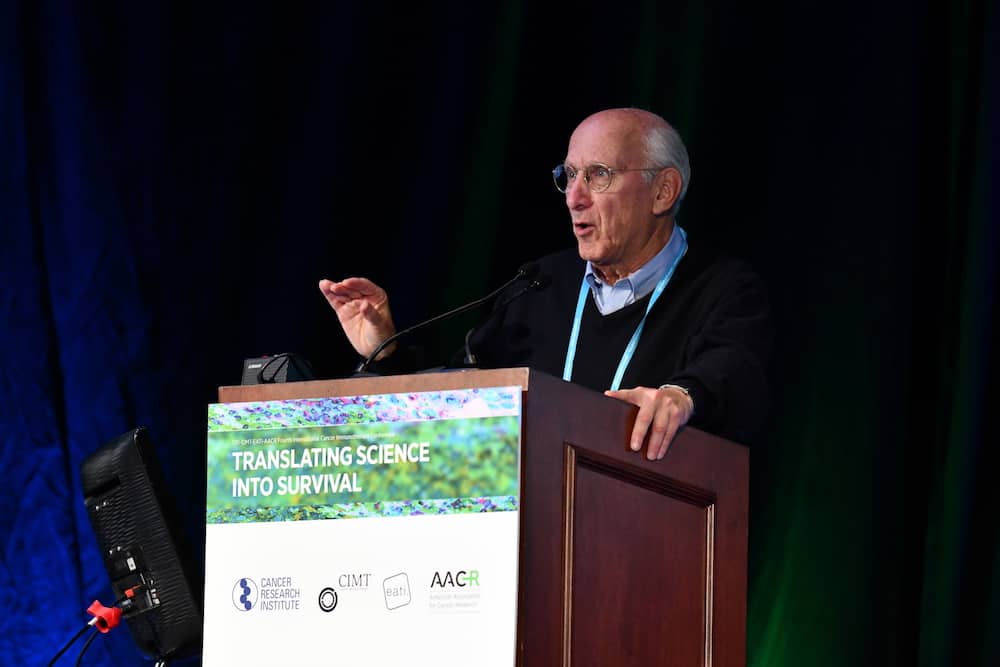
Rosenberg’s approach takes advantage of the immune system’s natural ability to recognize and target tumor cells’ mutated antigens, otherwise known as neoantigens. Among 94 patients with melanoma, gastrointestinal, and other epithelial cancers, Rosenberg found that the vast majority had pre-existing responses against at least one of their tumor’s neoantigens. Furthermore, nearly all of the neoantigens targeted by patients’ T cells were unique to the individuals, except for two mutated KRAS neoantigens.
Vaccines are another way to stimulate antigen-specific immune responses against tumors. Inovio’s Jeffrey Skolnik, MD, focused on a DNA-based vaccine strategy that uses electroporation to coax cells to take in the DNA.
This approach is currently being used in several trials in combination with PD-1/PD-L1 immunotherapy. One is targeting viral antigens in patients with human papillomavirus (HPV)-related head and neck cancer, whereas trials in unresectable or metastatic bladder cancer and newly diagnosed glioblastoma are targeting three common tumor-associated antigens and also designed to stimulate IL-12 production. Another targets two common prostate cancer antigens, prostate specific antigen (PSA) and prostate specific membrane antigen (PSMA).
Hyper-mutated tumors—such as those characterized by high microsatellite instability (MSI-hi) or deficient DNA mismatch repair (dMMR)—are much more likely to respond to immunotherapy. PARP inhibitors aim to generate a similar effect, block DNA repair and stimulate innate immunity via the STING pathway, among other mechanisms. Lauren Byers, MD, of MD Anderson Cancer Center, showed that PARP inhibition could increase PD-L1 expression in more than a dozen lung cancer lines.
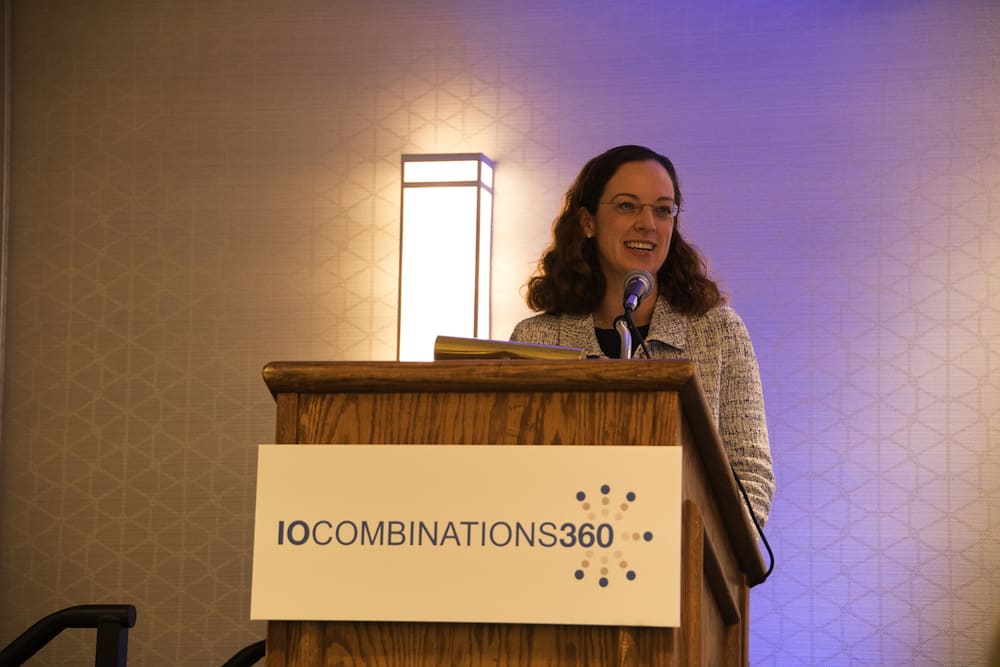
Both Byers and Maria Jure-Kunkel, PhD, of MedImmune, discussed clinical efforts to target PARP in combination with PD-1/PD-L1 immunotherapy in patients whose tumors have lost functionality in the LKB1 gene. Another combination discussed by Jure-Kunkel that’s currently under clinical evaluation targets the CD73/A2AR and EGFR pathways, which involves adenosine-mediated immunosuppression, in EGFR-mutated lung cancer.
In the hopes of improving responses for patients with pancreatic cancer, which has proven largely resistant to immunotherapy, Robert Vonderheide, MD, DPhil, of the University of Pennsylvania, showcased an approach targeting the immunostimulatory CD40 pathway. This approach, which is now moving into a phase II trial, first treats patients with chemotherapy to elicit tumor antigen release. Then, a CD40-activating antibody is given to promote adaptive immunity, followed by PD-1 blockade to prevent T cells within the tumor from becoming “exhausted.”
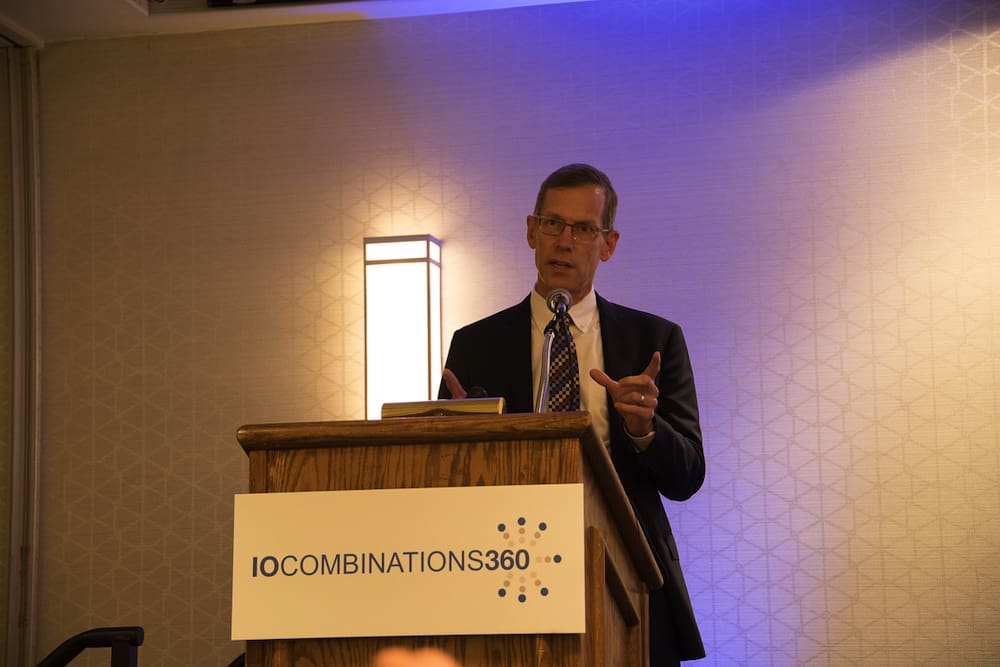
Bispecific antibodies, including bispeciific T cell engager antibodies (BiTEs), which target cancer cells and also bind and activate T cells, represent another promising immunotherapy agent. CD19-targeting BiTEs in leukemia are already approved by the U.S. Food and Drug Administration (FDA), and Amgen’s Julie Bailis, Ph.D., showcased the effectiveness of BiTEs targeting the EpCAM and CDH19 markers, and demonstrated that combining anti-CDH19 BiTEs with PD-1 blockade increase infiltration of T cells into tumors in mice.
Lance Leopold, MD, of Incyte Corporation, and Jason Luke, MD, of the University of Chicago, dissected the lessons learned from the recent ECHO-301 phase III trial in which IDO—an enzyme that breaks down tryptophan—was blocked along with PD-1 in melanoma. While the combination didn’t appear to offer any additional benefit for melanoma compared to PD-1 blockade alone, targeting this IDO-associated immunosuppression might still be valuable. In particular, Luke pointed to the aryl hydrocarbon receptor (AhR), which is activated by IDO-generated kyneurinine. Evidence that AhR, a factor that governs the expression of other genes, can impact interferon production through multiple mechanisms led Luke to speculate that it might be the dominant immunoregulatory node in that network.
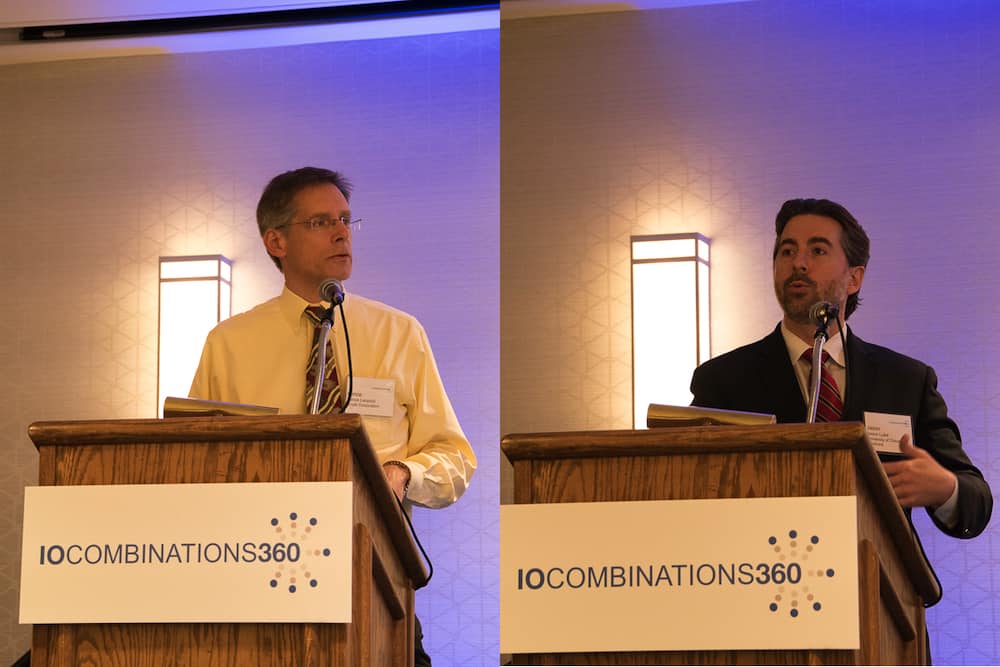
Recent insights regarding the gut microbiome make it another promising candidate for use in combination therapies, as explained by Jennifer Wargo, MD, of MD Anderson. In melanoma patients treated with PD-1 immunotherapy, Wargo identified bacterial signatures associated with an improved likelihood of response to treatment as well as other signatures associated with the presence or absence of side effects. She also discussed the importance of the diversity of the gut microbiome, with high-fiber diets being associated with improved diversity and outcomes, while both antibiotics and steroids were associated with less diverse gut microbiomes.
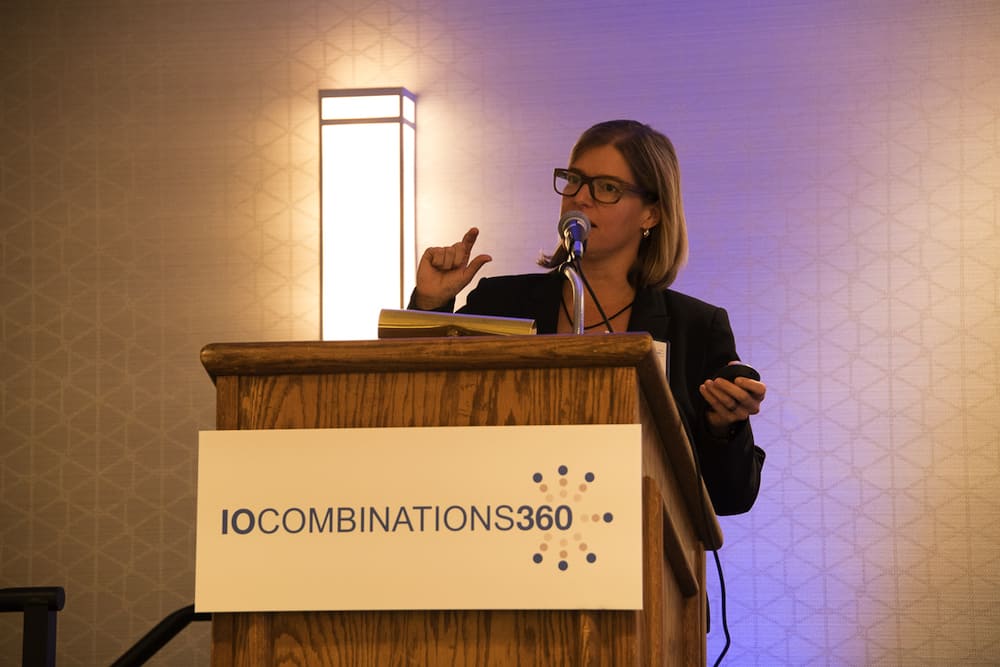
With regard to proactively modulating patients’ microbiomes, Wargo mentioned a trial combining PD-1 blockade with fecal microbiota transplants (FMTs) in order to improve immunotherapy responsiveness. However, Wargo stressed that our understanding of how the microbiome impacts immune activity remains limited, and future studies will be important to characterize its precise mechanisms.
These and other basic research studies—as well as translational efforts aimed at developing treatments for the clinic—will benefit from, and in some cases be made possible by, a variety of technological advances, including better ways to model human cancers.
“The main role of the mouse model is the mechanism,” said Hwu during a panel session. While doses may always have to be determined in phase I trials, with the mouse model, “you can find a mechanism and understand why you get responders and non-responders, and then it might help you pick a more intelligent biomarker to look at in the clinic.”
Hwu continued: “If you can define the population [of patients likely to benefit], I think that’s extremely important because tumors are so heterogeneous.” While cancer in mice is different than cancer in humans, Hwu believes there are still many insights to be learned in mice that could apply to humans. For instance, if one could use mice to identify a biomarker of immunotherapy responsiveness in mice that also translates to humans,”you can really de-risk your clinical trials.”
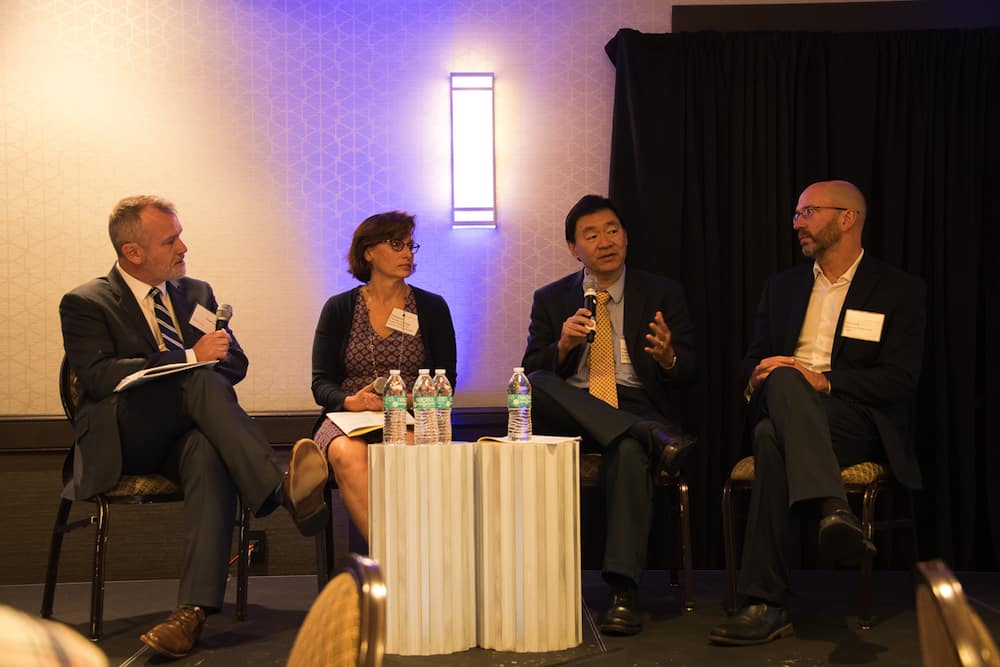
From left to right: Janssen’s Ian McCaffrey, PhD, Theresa Lavallee PhD, of the Parker Institute for Cancer Immunotherapy, Patrick Hwu, MD, of MD Anderson Cancer Center, and Marcus Bosenberg, PhD, of Yale Cancer Center
To improve that translational potential, Marcus Bosenberg, MD, PhD, of Yale Cancer Center, shared his efforts to develop roughly 40 cell lines with driver mutations relevant in human cancers. Additionally, by fine-tuning properties that influence the immune system’s ability to recognize the tumors—and thus their responsiveness to immunotherapy—different combinations can be evaluated more efficiently and appropriately.
Tumor “explants” offer an even more personalized way to study human cancers, and two such platforms were discussed by Dirk Jäeger, MD, of University Medical Center Heidelberg, and Mark Paris, PhD, of Mitra Biotech.
Due to their ability preserve the immune contexture of tumors, tumor explants can be used to characterize an individual’s tumor and immune cell interactions, and can help guide doctors as to whether a potential treatment might be effective for a given patient. This can be especially helpful in cancer types where there are multiple approved options and no clear guide to the best course of action for a particular person.
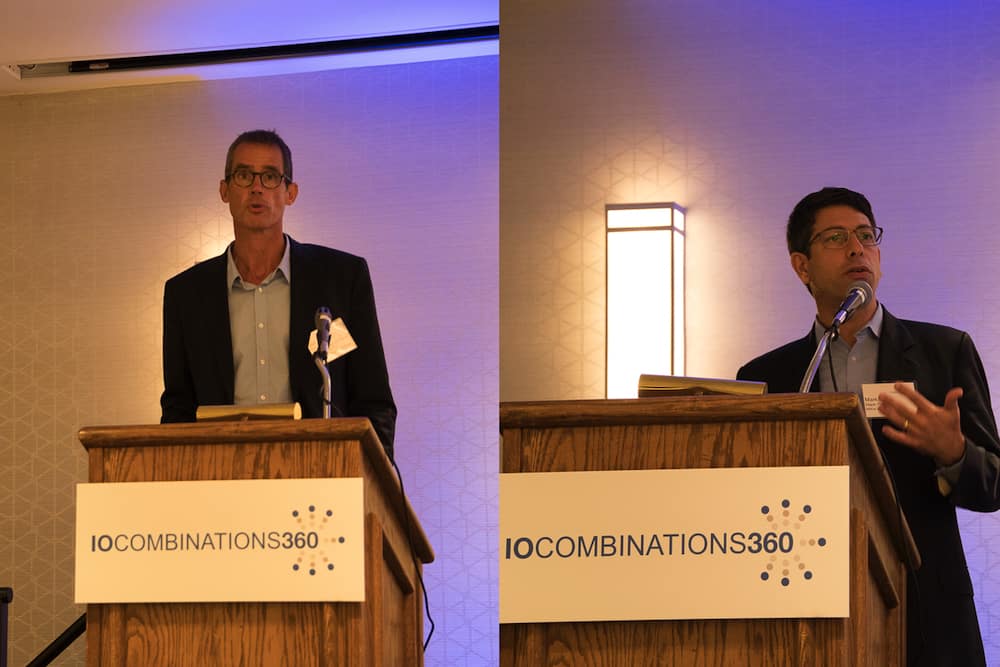
Dirk Jäeger, MD, (L) of University Medical Center Heidelberg, and Mark Paris, PhD, (R) of Mitra Biotech
Jäeger’s tumor explant model provides a way to explore the interactions between various cell types as well as the early effects of different treatments. While he found that tumor cell-secreted CCL5 can recruit T cells to tumors, it also fuels tumor growth. Using his model, he was able to show that CCL5 inhibition could effectively impede tumor growth, and his approach is now being tested in combination with PD-1 immunotherapy and chemotherapy in clinical trials for patients with colorectal and pancreatic cancer.
Paris’ histoculture platform allows for similar interrogations, and uses an algorithm that provides an overall “M Score”—based on factors related to pathology, cell growth, cell death, and metabolism—that can help predict an individual patient’s likelihood of response. This predictive power was validated in patients treated with an HER2-targeting BiTE both alone and in combination with PD-1 blockade, where it tracked the actual response rates fairly well.
Alessandro Cessano, MD, PhD, of nanoString Technologies, demonstrated the value of the nCounter, which enables digital counting of up to 800 different molecular targets. Its enzyme-free detection method can accommodate poor quality samples (FFPE), and automated sample processing and data collection return results within a day.
Erin Newburn, PhD, of Personalis, discussed the role that AceImmunoID could play in driving personalized vaccine development and immunotherapy biomarker discover. In addition to expression of immune checkpoints, it analyzes the mutations, neoantigen load, and antigen presentation capabilities of tumor cells, among other factors.
Will Singleterry, PhD, of IsoPlexis, spoke about a single cell proteomics chip that can define the functionality of individual T cells based on their cytokine signatures. The resulting polyfunctional strength index, which takes into account the proportion of T cells that secrete two or more of the desired cytokines, and the intensity of those secretions, can then be used to identify the cells most suited to a particular immunotherapy application.
Erick Yusko, PhD, of Adaptive Biotechnologies, presented a platform for characterizing a patients’ T cell repertoire, and determining if they already have any tumor-targeting cells. Furthermore, with the ability to track different T cell populations, one could determine how they change over time or in response to immunotherapy.
Beyond the development of these types of tools, Rational Combinations 360° also focused on issues relating to collaborations, manufacturing, and clinical trial designs to improve the efficiency of combination and biomarker-driven studies.
Sacha Gnjatic, PhD, of the Icahn School of Medicine at Mount Sinai, emphasized the importance of validation and harmonization efforts when it comes to establishing useful biomarkers. Additionally, that harmonization must be flexible enough to allow for reasonable innovation, while still ensuring inter-laboratory consistency and quality. In that way, Gnjatic suggested that agreeing on how to interpret data might be more important than defining a rigid standard operating procedure.
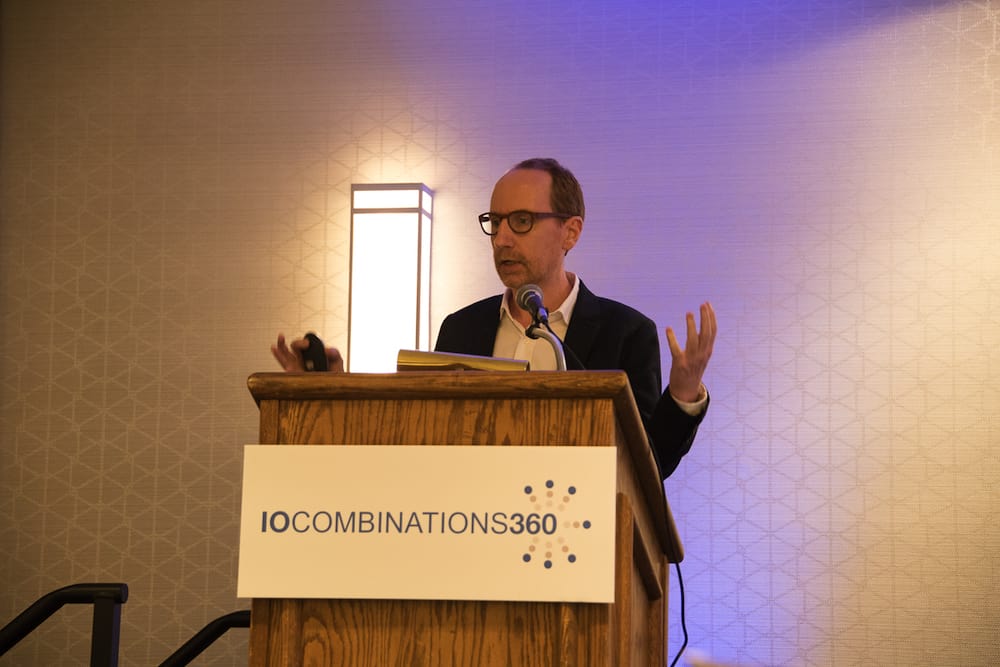
With respect to cellular immunotherapies, the two currently approved versions are made from a patient’s own immune cells, and so the CAR T cells are created “on demand” for each person. This customization leads to scalability issues. Even institutions like MD Anderson have had trouble scaling up quickly enough to accommodate eligible patients. It’s been more than a year since the first CAR T cell therapy received FDA approval, yet they’ve still only been able to treat a little more than 30 patients since at MD Anderson, according to Hwu. “We’re the largest cancer center in the world and you would think we’d be able to do more than that but it’s just the ramp-up…because this is a new kind of therapy.”
The current lack of scalability likely contributes to the high cost of current CAR T cell therapies, as well. Strategies are being explored to overcome this limitation by developing “off-the-shelf” versions that could be manufactured more efficiently. Even so, given their incredible potential to help patients, these seemingly higher prices might actually be more cost-efficient overall in some circumstances.
As Rosenberg put it, “It sounds like $370,000 or $400,000 for an individual treatment is expensive, and insurance agencies are likely to balk, but let’s add up the expenses for this patient with breast cancer who went through eleven different regimens, each one of which, ultimately led to progression of the disease. The best way to save medical care dollars is to cure patients, and not have them move from one relatively ineffective treatment to another.”
Toward the end of the conference, Daniel Chen, MD, PhD, offered some perspective on this incredible moment in time in cancer immunotherapy and where we might go from here with the help of synthetic biology.
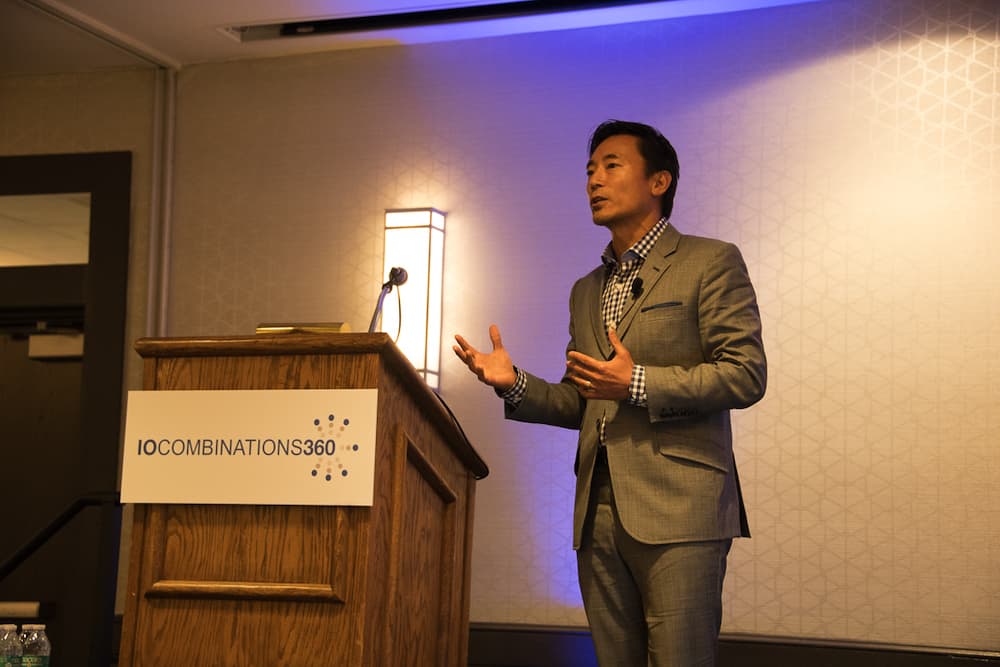
Although he acknowledged that many challenges—scientific and otherwise—must still be overcome to reach immunotherapy’s full potential, Chen also expressed his confidence that if we can solve the science side of the equation, the rest will take care of itself. “Our job as a community is to cure cancer. If we can cure cancer, we’ll figure out what it will take to get these therapies delivered. Now I do think that there are real world issues, major challenges…but I think at the end of the day if we cure cancer, we’ll figure it out.”
Wrapping up his talk, Chen concluded with: “As we think through the future of cancer immunotherapy, I would leave you with this: the Human Genome Project was completed in 2001…we essentially know what all the different targets are that exist in the human body [that we could potentially design therapies against]…we are well beyond that day where we’re just identifying biologies to inhibit or to activate.”
Now, noted Chen, we have a much better idea of how all of the pieces—including the immune system—fit together, which has enabled us to devise a number of innovative agents that we can combine together in ever more rational and effective ways. Chen was clear that while we may still be near the beginning of this journey, “in many ways, we have moved on from designing violins to creating orchestras.”
To learn more about the exciting advancements in cancer immunotherapy, be sure to catch the next installment in the Conference Forum’s 360° series, the fifth annual Immuno-Oncology 360°, which will take place in on February 6-8, 2019 in New York City. CRI members receive a 20% off registration with the discount code CRI20.
All photos by Arthur Brodsky for the Cancer Research Institute.

